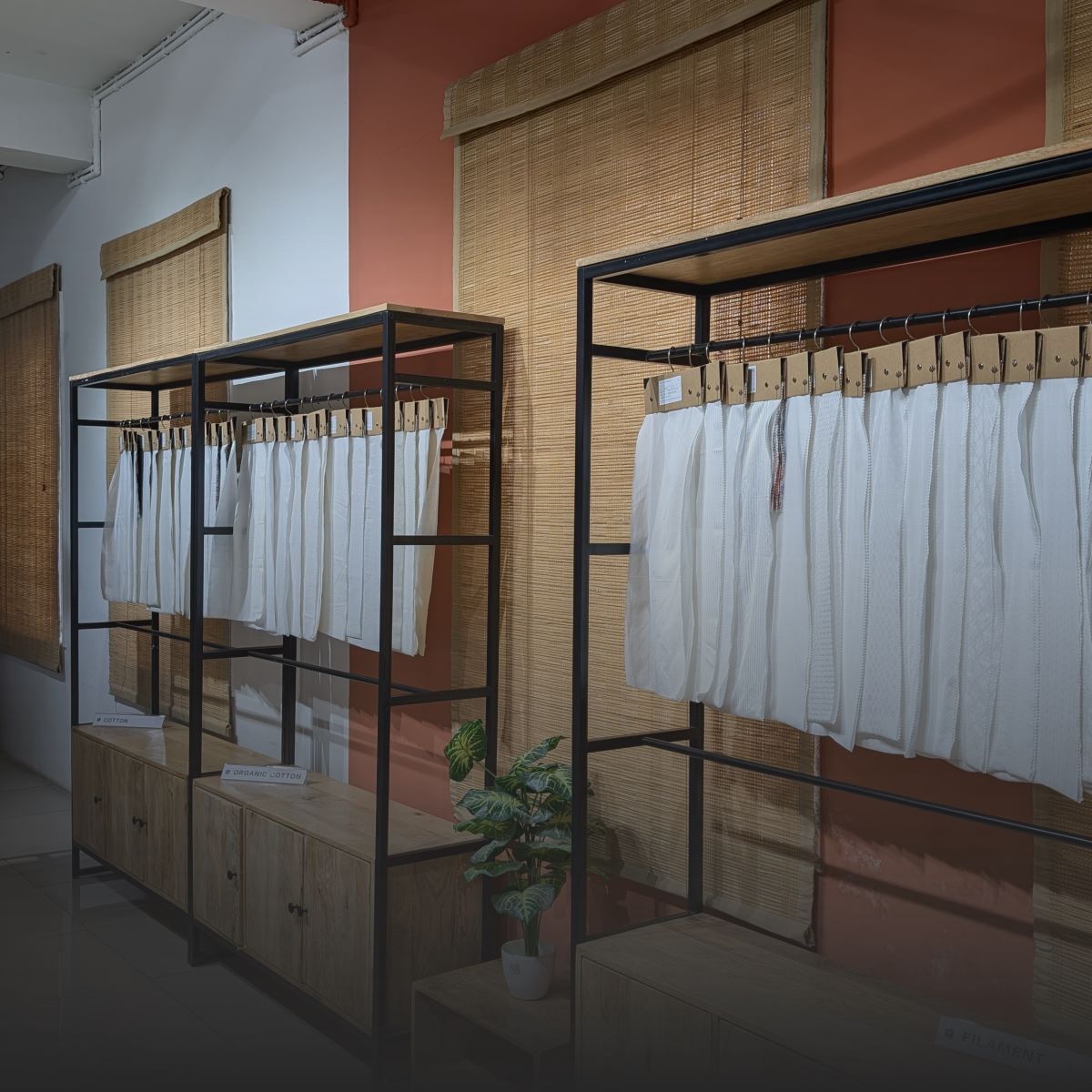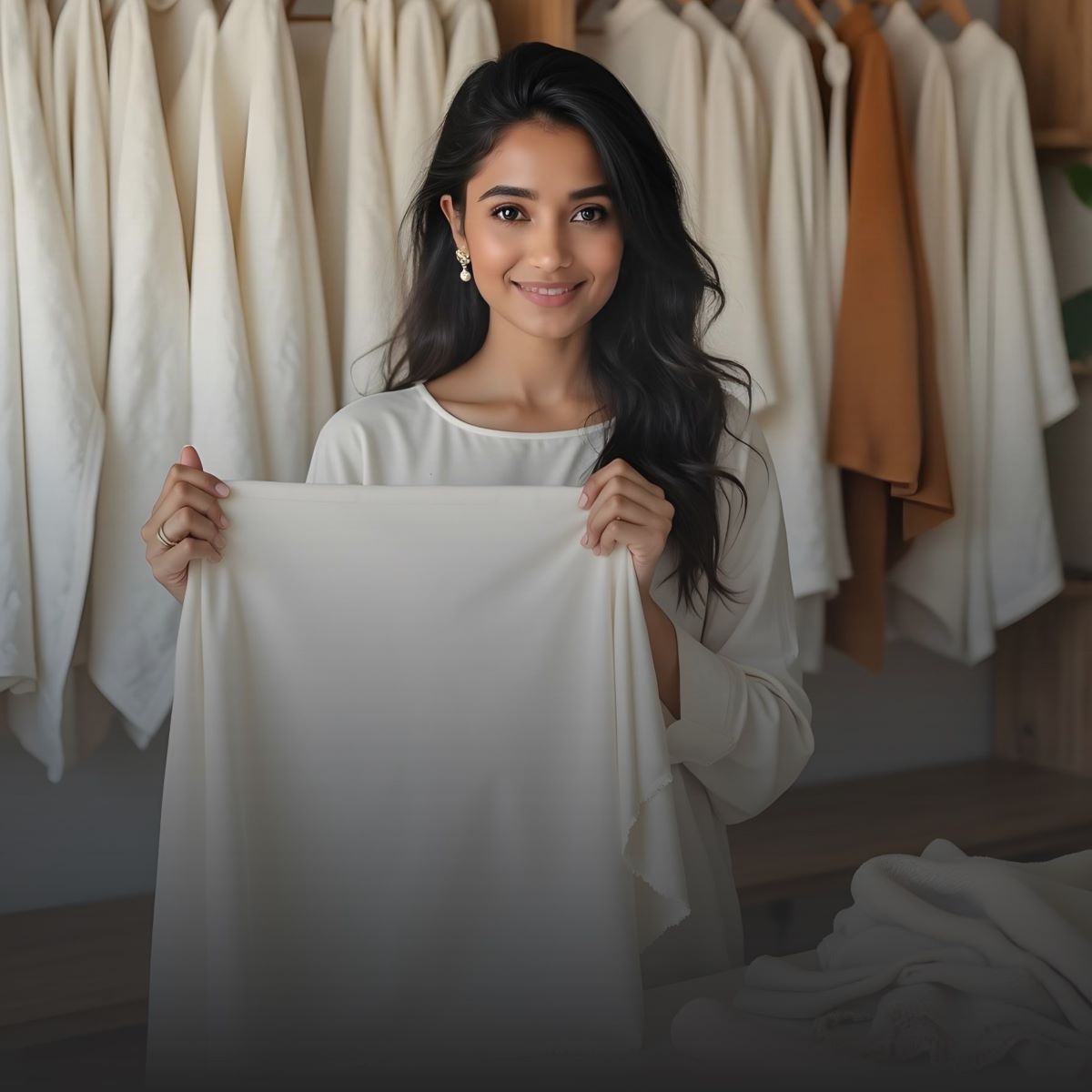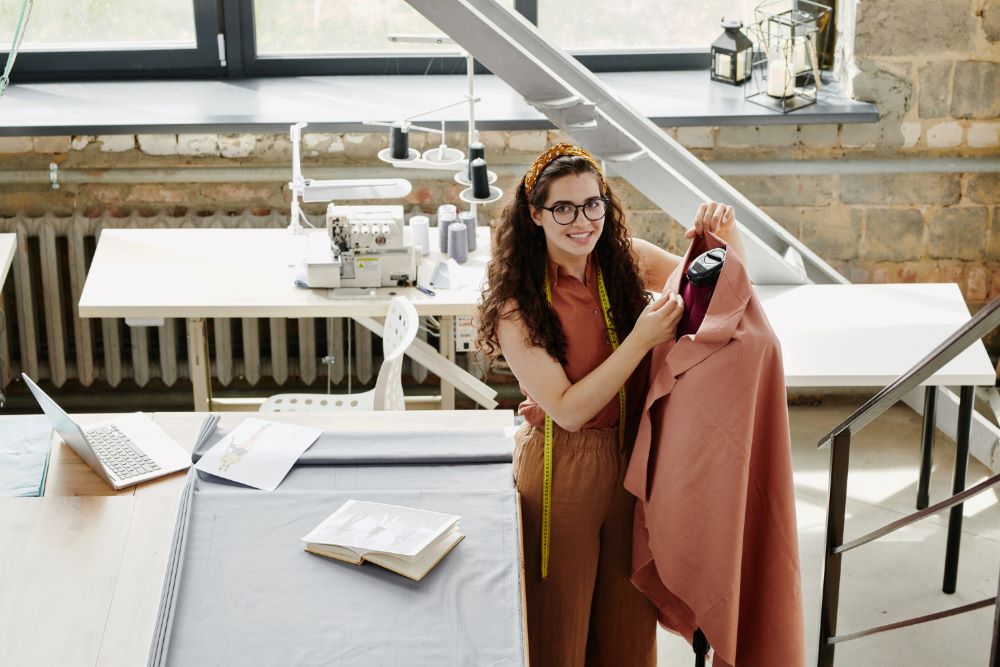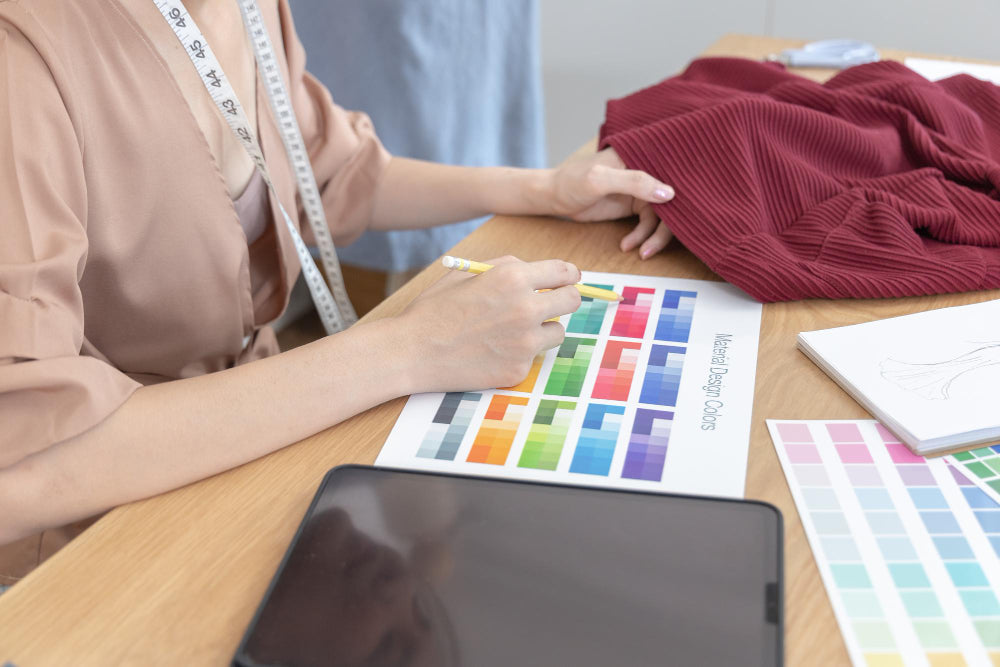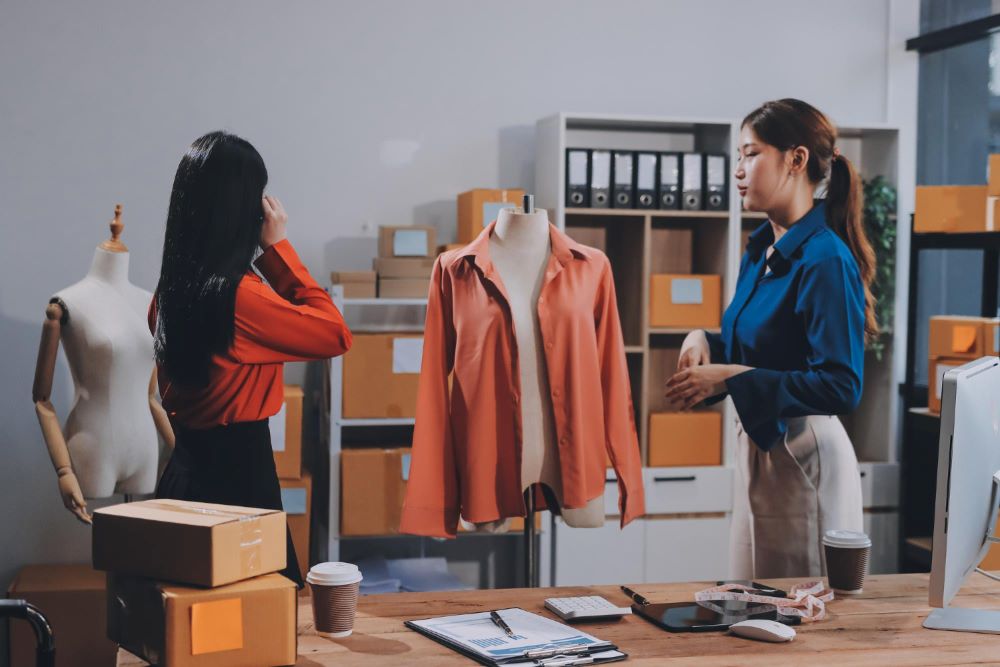As businesses expand into emerging fabric markets, the global textile market is changing. Industry analysts expect the market will be worth over $1 trillion in 2025, driven by Asia-Pacific, Africa, and Latin American demand. In research, the market is expected to rise from $800B in 2020 to $900B in 2023 and surpass $1T by 2025, with an annual CAGR of ~4–6%. This rise is due to textile trends such as sustainable fashion, digital commerce, and global demand for different fabrics.
Urbanization and rising living levels in emerging economies increase apparel and home-textile demand. E-commerce platforms make fabric sourcing easier than ever, helping designers find unique materials. Trade policy changes and supply-chain retooling (e.g., diversifying away from China) drive investment in new industrial centres. These considerations drive emerging creative, affordable, and eco-friendly fabric markets.
Key Trends Driving Emerging Fabric Markets

These days, textile trends are speeding up the growth of new output hubs. Some leading trends are:
- Sustainability and Responsible Sourcing: People demand eco-friendly garments and home goods more than ever. Brands are prioritizing sustainable fabric sourcing, like organic cotton, recycled polyester, and low-impact colours. Green emerging markets like India's organic cotton fields and Latin America's recycled fibre mills gain an edge. Customers who value the brand's environmental friendliness would like these textiles.
- Cost Advantage & Flexibility: Low labour and production costs are common in emerging nations. Brands can create large volumes at low prices because of this cost advantage. Many developing suppliers provide minimal MOQ, giving small designs or test runs freedom. Startups and fast-fashion labels benefit from smaller, personalised orders without high overheads.
- Technological Innovation: New fabric technologies are spreading worldwide. Digital printing, laser cutting, and automated looms are being used in Vietnam, India, and elsewhere. Unique prints, faster sampling, and faster turnaround are ideal for on-trend collections. Digitally printed silks and jacquards from Vietnam or smart textiles from China-influenced hubs show how tech drives the sector.
- Supply-Chain Diversification: Trade disagreements and geopolitical shifts are reducing brand dependence. Companies are shifting to Bangladesh, Ethiopia, Mexico, and Peru to source fabric. Diversification reduces risk and stabilises supply lines. Free trade agreements like USMCA and AfCFTA make African and Latin American commodities more marketable.
- Consumer-Driven Design: Younger shoppers want new. They want global styles, local craftsmanship, and clothing tales. Cultural textiles like Indian handlooms, West African wax prints, and Latin American embroideries meet this demand in emerging markets. Using ethnic designs and artisanal processes, brands create unique clothing using textile trends.
The trends of sustainability, cost efficiency, innovation, and the demand for unique designs are driving the growth of emerging fabric markets.
Key Emerging Markets In The Fabric Industry

Let's look at some of the new markets in the fabric business that are changing how fabrics are bought and how clothes are made. These places are becoming known for making things, coming up with new biodegradable materials, and being important for trade around the world.
1. India: A Textile Powerhouse
India is a major textile producer. After centuries of weaving and printing, fabric manufacturers in India sell cotton, silk, jute, and technical fabrics. Textiles account for a large portion of India's exports and employ millions. It has a large skilled workforce, various industry clusters, and strong infrastructure in Gujarat and Tamil Nadu. Following global eco-trends, India is a leader in sustainable materials like organic cotton and bamboo fibre. Brands have several options and a cost advantage in India, but they must comply with regional legislation and quality standards.
Key Statistics (India):
|
Metric |
Value |
|
Current Textile Exports (2023) |
USD 44 billion |
|
Targeted Textile Exports (2030) |
USD 100 billion |
|
Technical Textiles Market Size (2023) |
USD 23 billion |
|
Projected Technical Textiles Market Size (2027) |
USD 40-45 billion |
|
CAGR of Technical Textile Sector |
~9-10% |
2. Vietnam: Rising Textile Export Hub
Recent years have seen Vietnam textile sourcing boom. Trade agreements (CPTPP, EVFTA) and foreign investment have increased Vietnam's garment and fabric output. Vietnam has many textile industrial parks and innovative production methods.
Brands shifting supply chains from China like its manufacturers' consistent lead times and western standards. Polyester knits, rayon blends, and cashmere mixes are important fabrics. Competitive pricing and proximity to Asian supply chains improve its appeal in the global textile market. Vietnam is a rising star in basic and technical fabric production:
- Agreements with large markets like the EU and CPTPP.
- Fast textile machinery modernisation.
- GOTS and OEKO-TEX certifications are important.
3. Bangladesh: Garment Sourcing Giant
Bangladesh has long been known for garment sourcing. Due to low labour costs and a mature ready-made garment (RMG) industry, it exports the second-most garments behind China. Bangladesh is known for making clothing from fabric, but its textile mills are increasing. Modern spinning and weaving facilities for cotton fabrics have been funded by the government and private sector.
Bangladesh has improved industry safety and sustainability after international criticism. Here, brands receive cost advantages but must monitor compliance, worker wellbeing, and order lead times. Bangladesh exports the most garments and invests extensively in local fabric manufacturing for backward integration:
- Investments in green factories rise.
- Produce denim, cotton, and mixed fabrics.
- Goal: $50 billion garment exports by 2025.
4. Ethiopia (Africa): Africa’s Textile Frontier
Ethiopia leads the African textile industry's rapid growth. Ethiopia wants to be Africa's top garment exporter with government-backed textile parks and incentives for Chinese and Indian textile businesses. Low labour costs and improving infrastructure like the Addis Ababa-Djibouti rail make it competitive.
Ethiopia also exports duty-free to the U.S. under AgOA (the African Growth and Opportunity Act) advantages. The textile industry is still emerging, although cotton is farmed locally and new manufacturers make woven and knit materials for export. In addition to Ethiopia, Kenya, Tanzania, and Mozambique are developing their textile industry using local materials and labour. As part of global responsible sourcing trends, the region promotes ethical trade and sustainable agriculture like fair-trade cotton. Countries like Ethiopia and Kenya offer:
- Abundant raw materials (cotton).
- Duty-free access to U.S. markets under AGOA.
- Growing domestic industries supported by international investments.
5. Latin America: Nearshoring & Specialty Fabrics
Mexico, Brazil, Colombia, and Peru are becoming fabric suppliers in Latin America. Mexican mills make denim, woollens, and synthetics for North American companies due to USMCA. Denim, sportswear, and casual wear materials are exported from Brazil and Colombia, which have huge home markets.
Peru produces luxury cotton (Pima) and alpaca wool. Free-trade garment businesses in Guatemala and Honduras also contribute. Latin American suppliers have shorter lead times to the Americas and superior textile technology. The region's blend of traditional craftsmanship and current innovation is reflected in their focus on organic cotton and sustainable techniques. Latin America, especially Brazil and Colombia, emphasises:
- Sustainable, natural fibers (e.g., organic cotton, jute).
- Serving fast-growing local fashion markets.
- Reducing supply chain timelines for North American brands.
Challenges And Risks When Sourcing From Emerging Markets

As emerging fabric markets present numerous advantages, it’s important for brands to recognise the possible challenges ahead:
- Quality and Consistency: New vendors may lack quality-control mechanisms. Fabric weight, colour consistency, and finishing may vary for brands. Thorough screening and sampling are necessary.
- Compliance and Ethics: Country-specific labour and environmental laws vary. Controlling pollution and ethical working conditions in manufacturers is crucial. Brands should partner with transparent, certified partners.
- Infrastructure and Logistics: Some emerging regions have infrastructure issues such power outages, port congestion, and cold storage. They can delay shipments or raise costs.
- Communication and Time Zones: Language hurdles and geographical distances can make order management difficult. There may be misunderstandings in specifications or communication delays.
- Political and Economic Instability: Changing trade policy, tariffs, or local governance might disrupt sourcing. Currency swings and new import/export restrictions increase risk.
- Intellectual Property (IP) Risks: Countries with weaker IP enforcement make design protection tougher. Agreements and trustworthy partners may help brands.
Admitting these risks allows brands to mitigate them via audits, sample approvals, and insurance.
Moving Forward With Innovation And Growth

New fabric markets will change global supply lines and cause growth that has never been seen before. Firms have a number of choices, from Africa's environmentally friendly methods to Asia-Pacific's cutting-edge cloth factories.
Today, people who make textiles, fashion designers, and businessmen should take advantage of these changes. Your business may do well in a world that is always changing if you pick the right location, make smart partnerships, and put money into innovative ideas that look to the future.
Trying to stay ahead in fabric? Contact specialists for sourcing and production advice. Together, we can make fabrics for today and tomorrow.
Opportunities For Textile Manufacturers

By investigating developing markets, which provide access to fresh resources and a rising consumer base, textile producers can discover great prospects. Here are few important possibilities to think about:
- Sustainable Fabrics: Materials that are good for the environment, like bamboo, hemp, and organic cotton, are becoming more popular. As a result of global trends towards sustainability, emerging economies are moving towards these fabrics.
- Digitization: More and more companies are investing in digital tools for creating, dying, and printing. These tools help companies cut costs and work more efficiently.
- Custom Orders for SMEs: Customised small-batch orders are becoming more popular in many places to meet the needs of local businesses and new fashion brands.
Opportunities For Investors

Investors can make a lot of money in new cloth markets. Here are some trends to keep an eye on the market:
- Infrastructure Development: People who are ready to put money into building infrastructure can make a lot of money as industrial parks, advanced manufacturing units, and supply chains grow.
- Eco-Innovation: Invest in companies that work on circular economies and products that don't make waste.
- Luxury Textiles: As the market for high-end goods goes global, companies that make textiles are having a lot of success in developing countries.
How Textile Businesses Can Capitalize On Emerging Markets

By entering emerging markets with new opportunities, cost benefits, and innovation potential, textile companies can grow significantly. Here are some ways to enter and succeed in these changing regions:
1. Partner with Established Players
To lower your risk and get into the market faster, team up with local makers and fabric material suppliers in these places.
2. Leverage Market Incentives
Know about programs and rewards that the government backs. As an example:
- India’s PLI scheme.
- Ethiopia’s tax incentives for textile-focused investments.
- Brazil’s promotion of bio-based materials.
3. Invest in Technology
Adopt artificial intelligence, the internet of things, and other developing techniques in order to maintain your competitive edge as these marketplaces modernise their processes.
4. Prioritize Sustainable Practices
Pay attention to finding materials and doing things that are in line with the growing need for environmentally friendly options. Adding sustainability to your business can make it stand out.
5. Collaborate with Designers
There are a lot of authentic designs with a lot of cultural depth in emerging countries. Work with talented people in your area to give your items a unique look.
How Fabriclore Helps Brands Source From Emerging Markets

Fabriclore connects known names around the world with new fabric shops. Fabriclore makes reliable fabric sourcing possible in the following ways:
- Curated Supplier Network: Through a network of trusted companies and craftsmen in India, Vietnam, Bangladesh, and other places, Fabriclore works with them. Through one site, brands can connect with hundreds of fabric wholesale manufacturers.
- Sustainable & Responsible Options: Fabriclore focusses on eco-friendly and approved materials (like organic, recycled, and low-impact dyes) and calls this sustainable fabric sourcing. The people on their team can help brands pick things that are moral.
- Low MOQs and Flexibility: Fabriclore gives small-batch and on-demand production because they know what modern brands need. One of the best things about low MOQ sourcing is that it gives creators the freedom to order smaller amounts or make changes quickly.
- Quality Control and Compliance: The platform has processes for quality assurance and factory audits. This makes sure that the materials meet technical requirements and follow labour laws.
- End-to-End Support: Fabriclore helps with every step of the buying process, from design advice to shipping logistics. They give advice on textile trends in fashion, help turn design ideas into real products, and keep track of deadlines.
- Digital Showcase of Fabric Trends: Fabriclore puts together a lot of lookbooks and trend reports with textiles from growing markets. This gives brands ideas and makes it easier to do study when looking into new materials.
Fabriclore helps firms take advantage of emerging economies' cost advantages, innovation, and sustainability while reducing the risks of offshore sourcing by integrating local experience with a digital interface.
Future Outlook: Why Emerging Markets Are The Future Of Fabric Sourcing

|
Aspect |
Developed Markets |
Emerging Markets |
|
Cost |
High |
Competitive |
|
Flexibility (MOQ) |
Limited |
High |
|
Innovation |
Moderate |
Rapid |
|
Sustainability |
Growing |
Strong Focus |
Textile sourcing will be dominated by emerging markets over the next ten years, thanks to eco-conscious production, adoption of technology, and local-to-global storytelling.
Pro Tip: Start connecting with new suppliers instantly to improve cost, flexibility, and product authenticity.
Final Thoughts: Tapping Into The Future Of Textile Sourcing Starts Now

Emerging fabric markets are now the driving force behind the global textile industry. Fashion brands, textile manufacturers, and investors can capitalise on increased demand for sustainable materials, cost-effective production and flexible sourcing models in India, Vietnam, Bangladesh, Ethiopia, and Latin America.
Businesses can cut production costs, diversify supply chains, obtain authentic, culturally rich fabrics, and embrace responsible sourcing practices that appeal to conscious customers by aligning with these markets.
It's time to act if you're a startup looking for low MOQ options, a fashion label aiming to scale sustainably, or a manufacturing exploring worldwide expansion.
Take the lead—Adopt new ideas, work together in your community, and create a sourcing strategy that looks to the future. Let Fabriclore lead you on your journey, every step of the way.
If you want to buy wholesale fabric in the USA, start by finding a trusted supplier that offers good quality fabric at affordable prices. Buying in bulk can help you save money, whether you’re a fashion designer, business owner, or someone who loves sewing. Choose a supplier that gives you many fabric options, low minimum order, and fast delivery. This way, you can easily get the materials you need for your projects.
We also happen to be a magnet for suggestions, and would love to catch yours….throw us yours on hello@fabriclore.com
